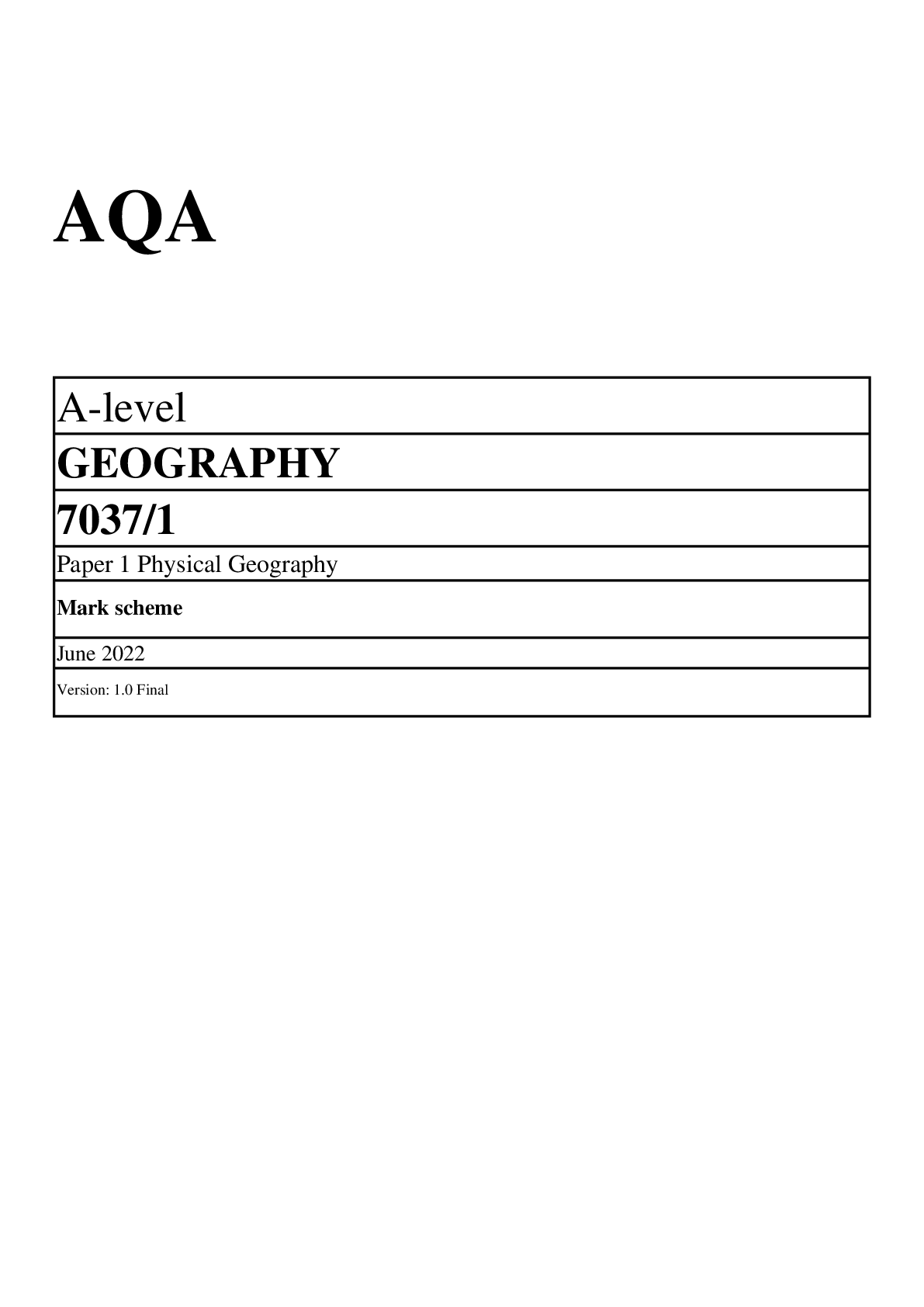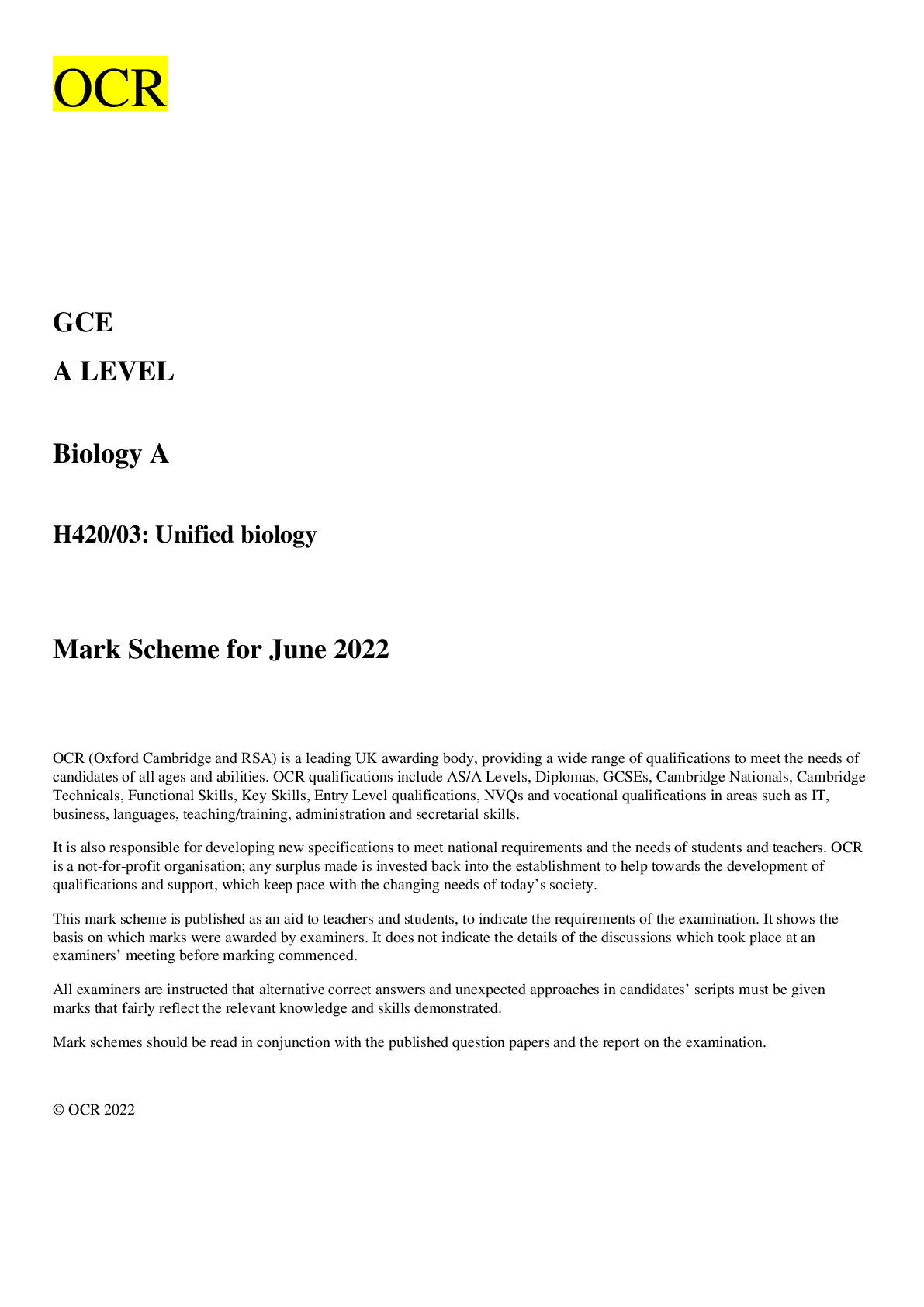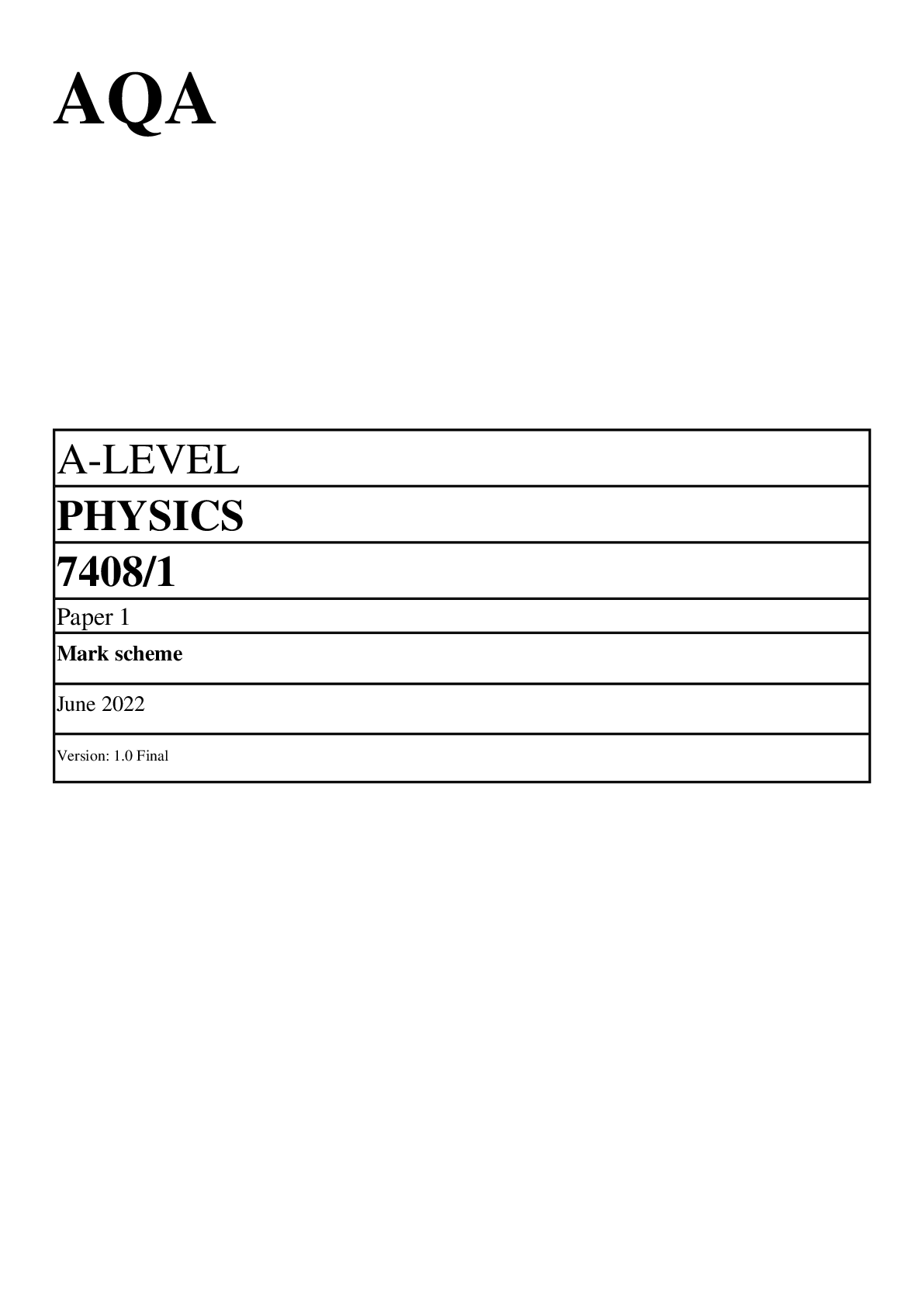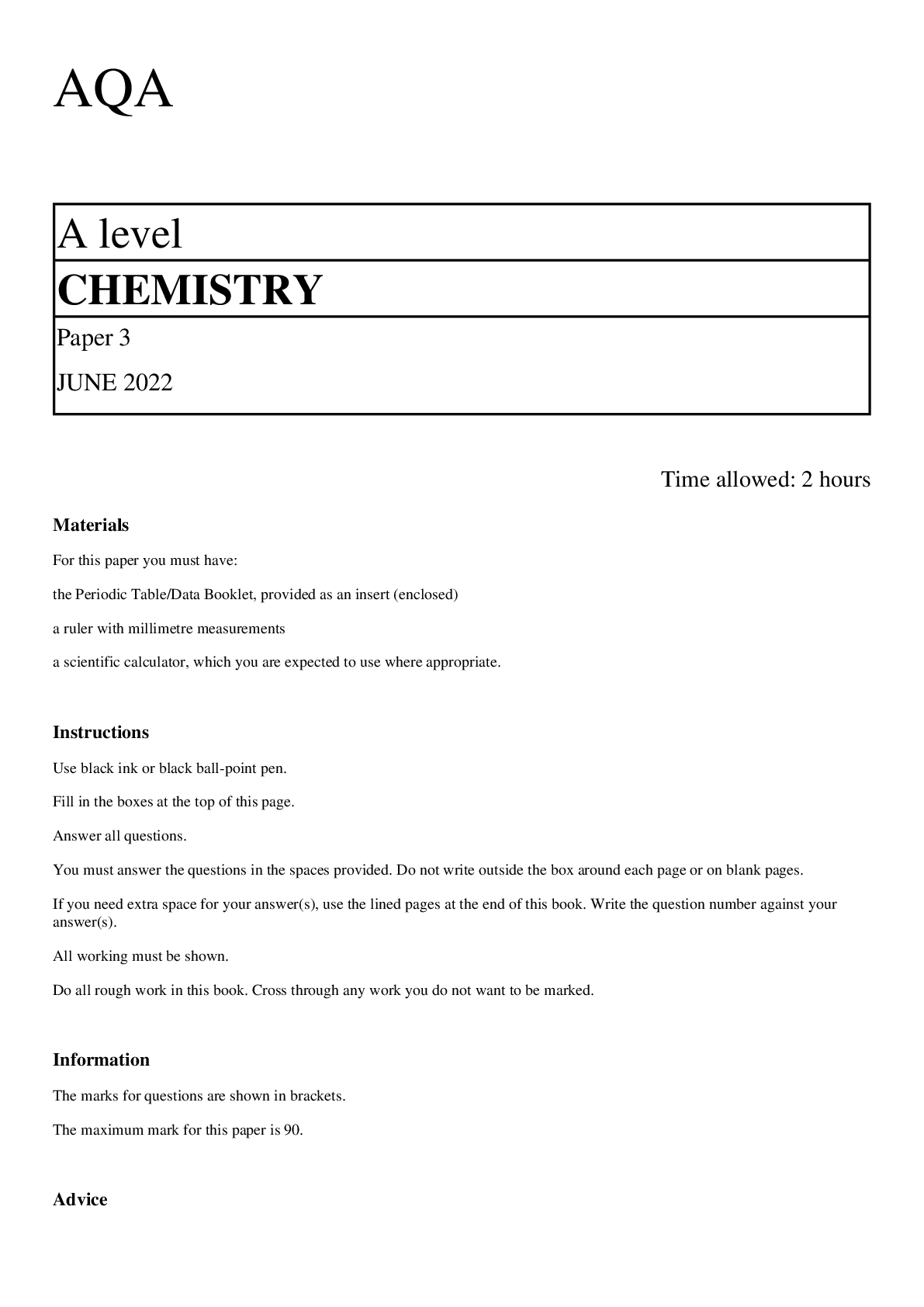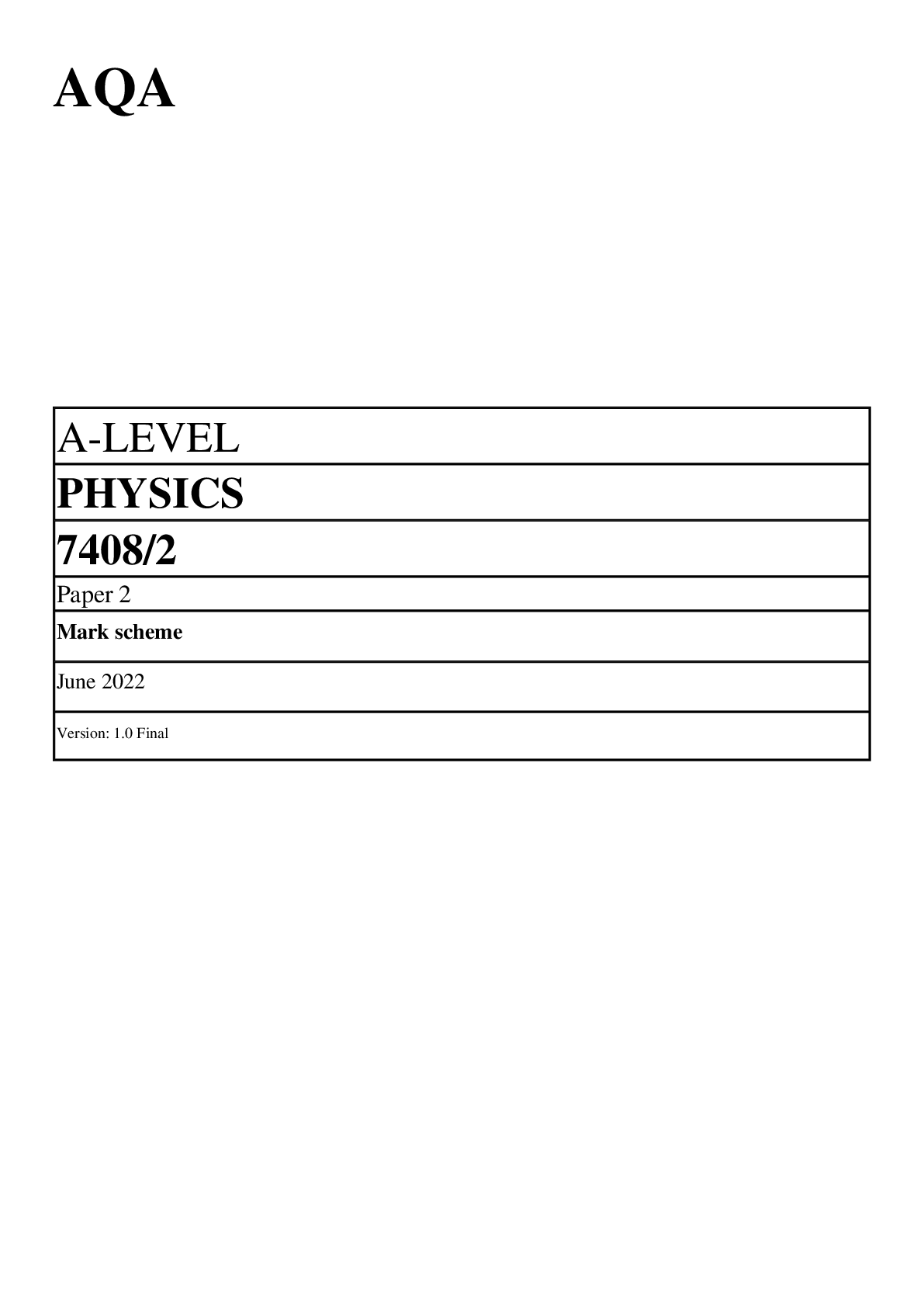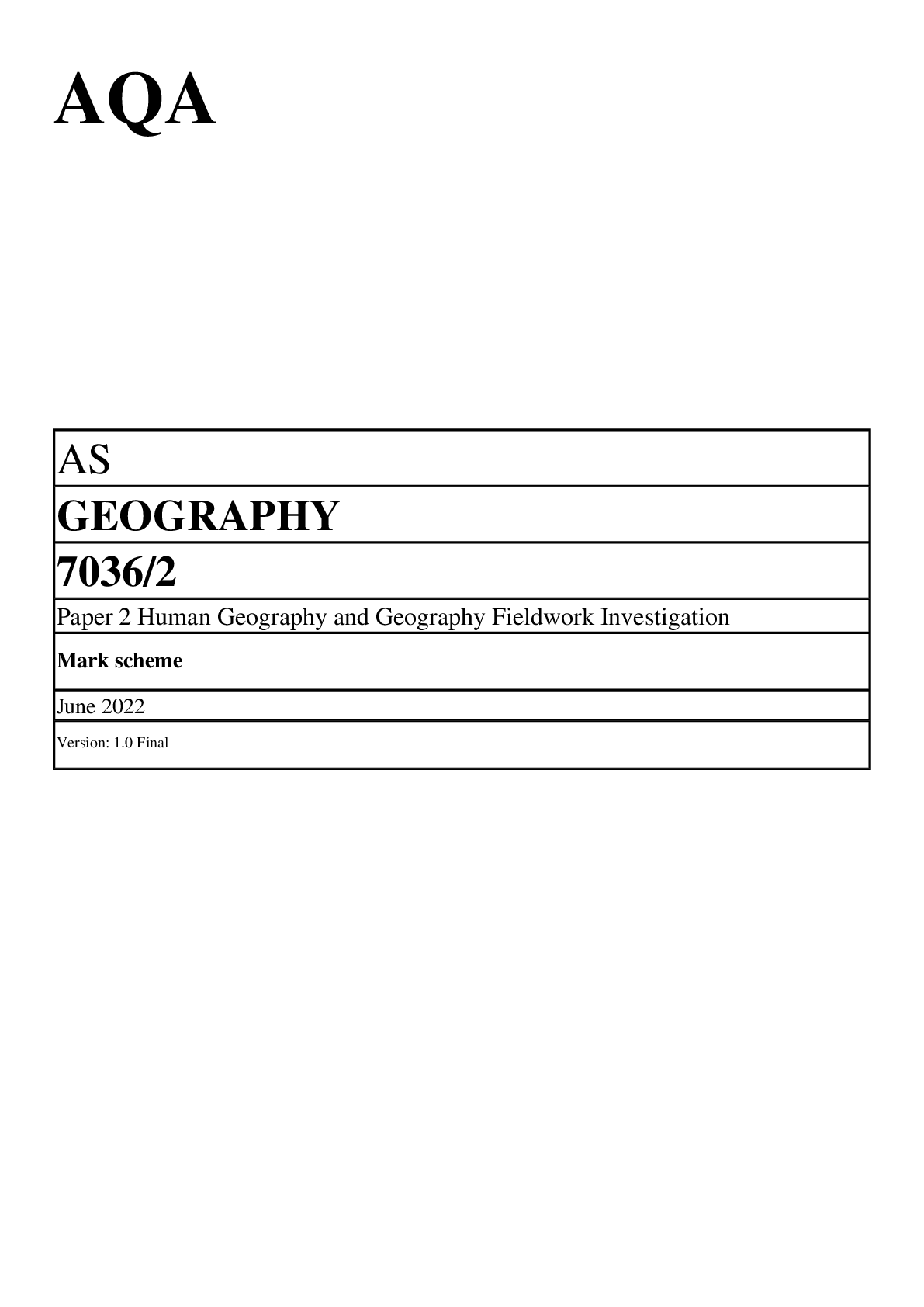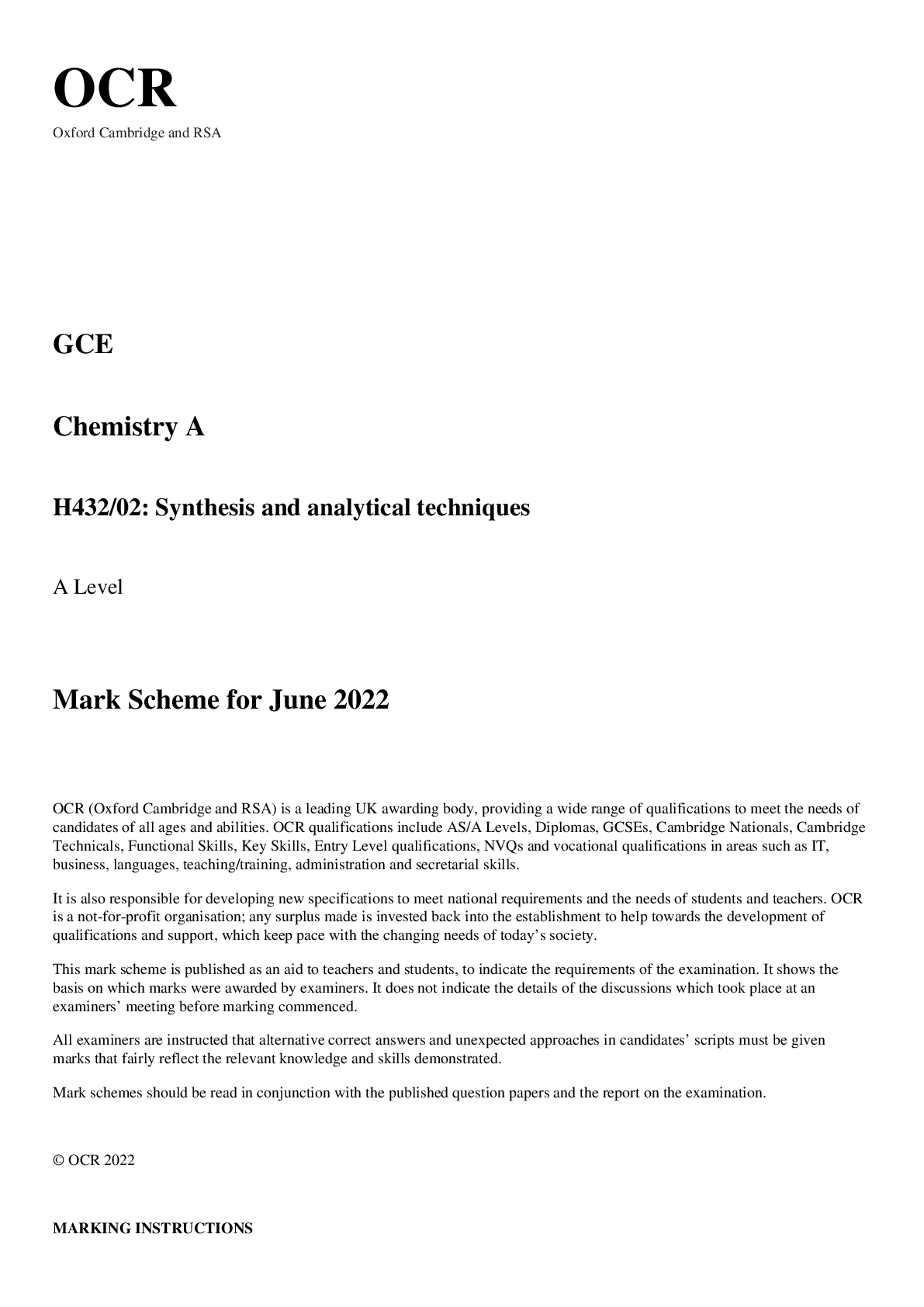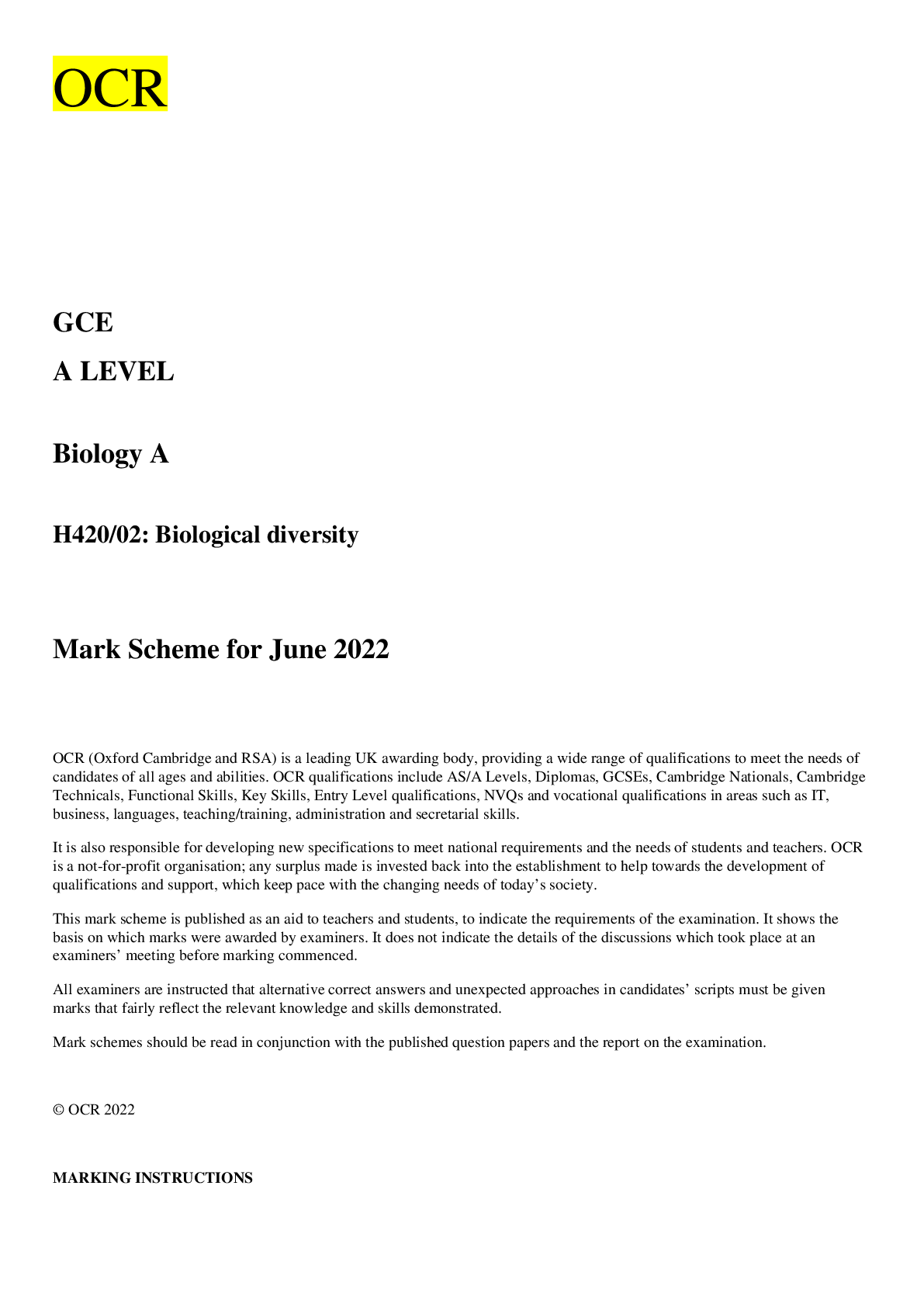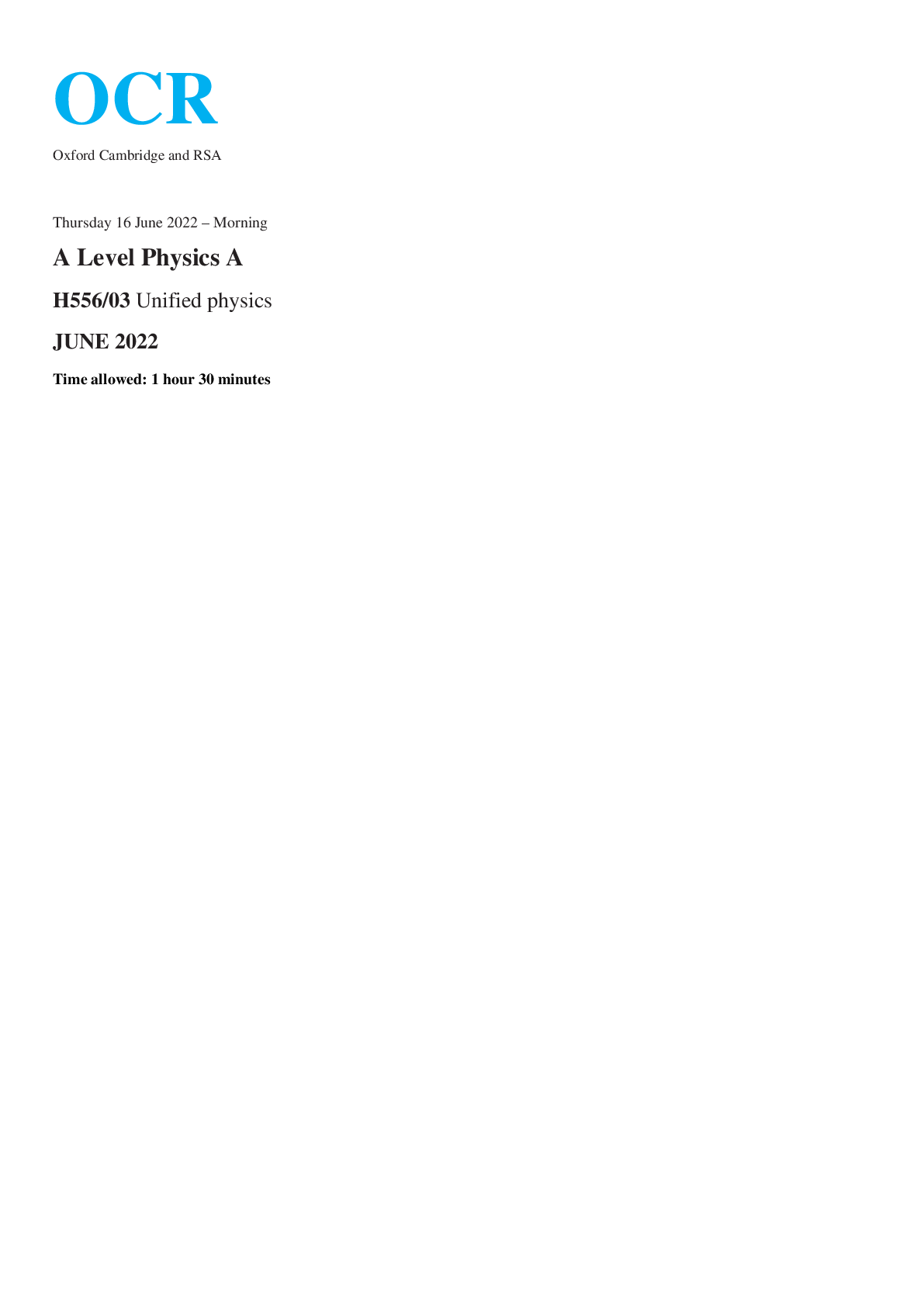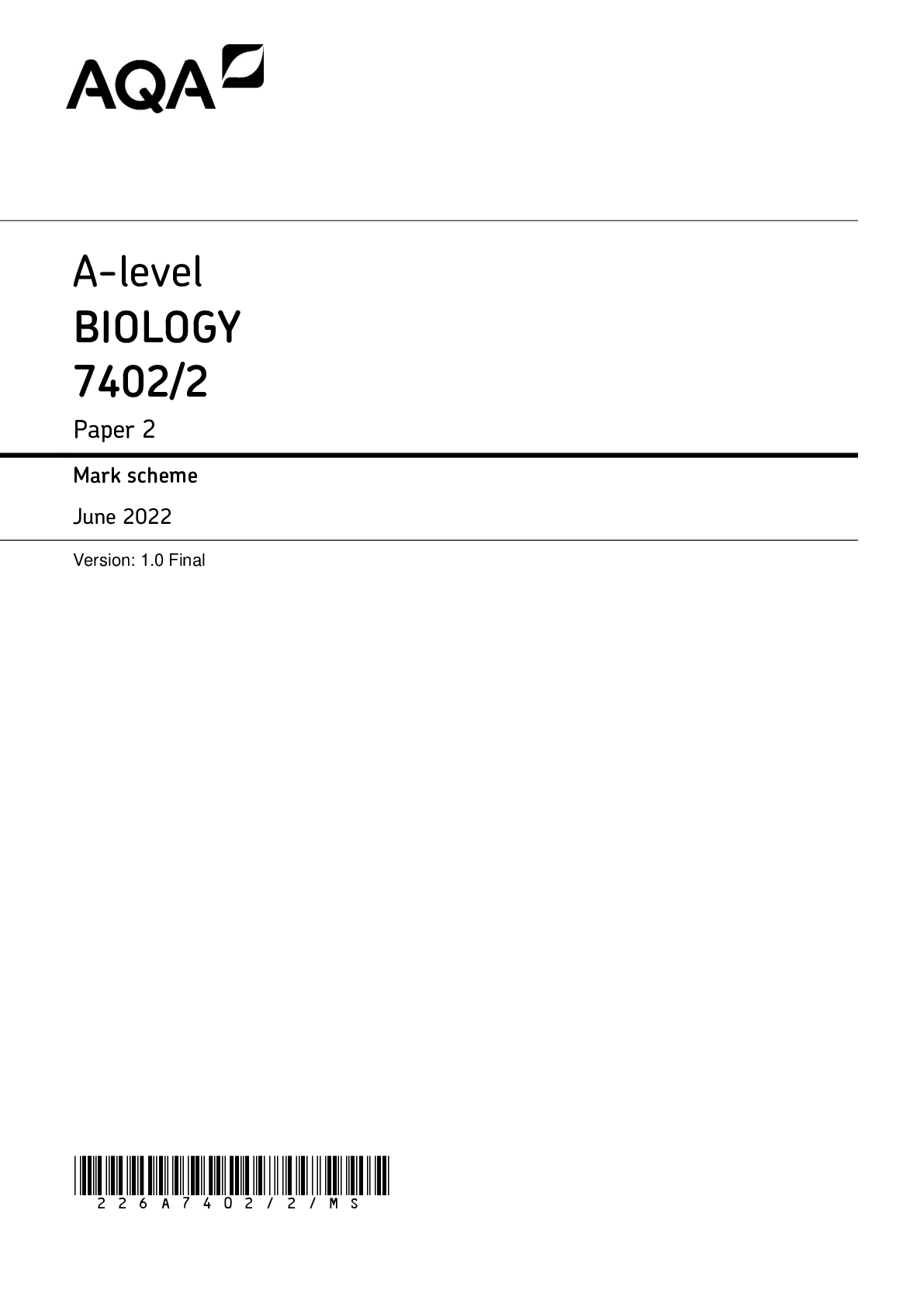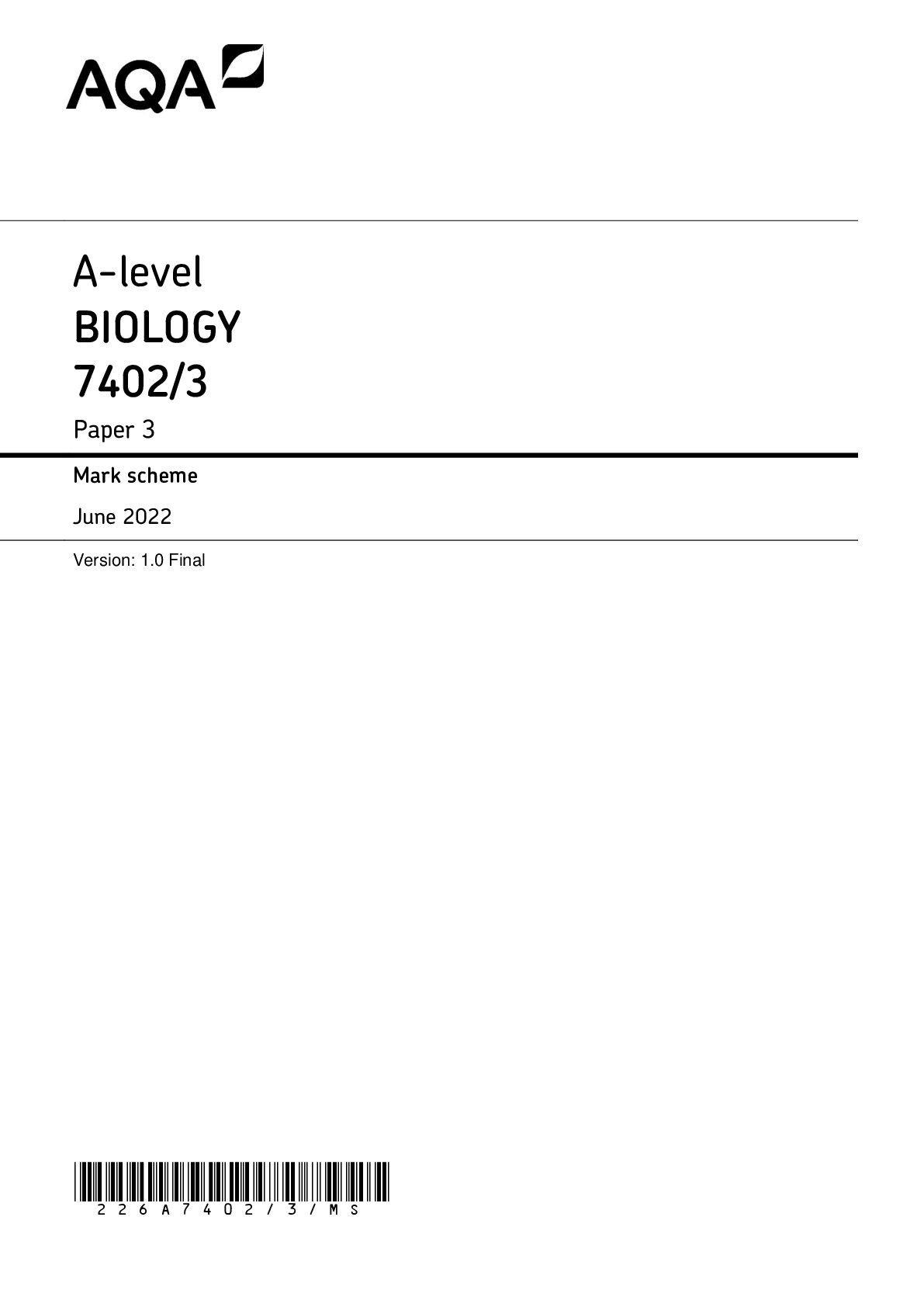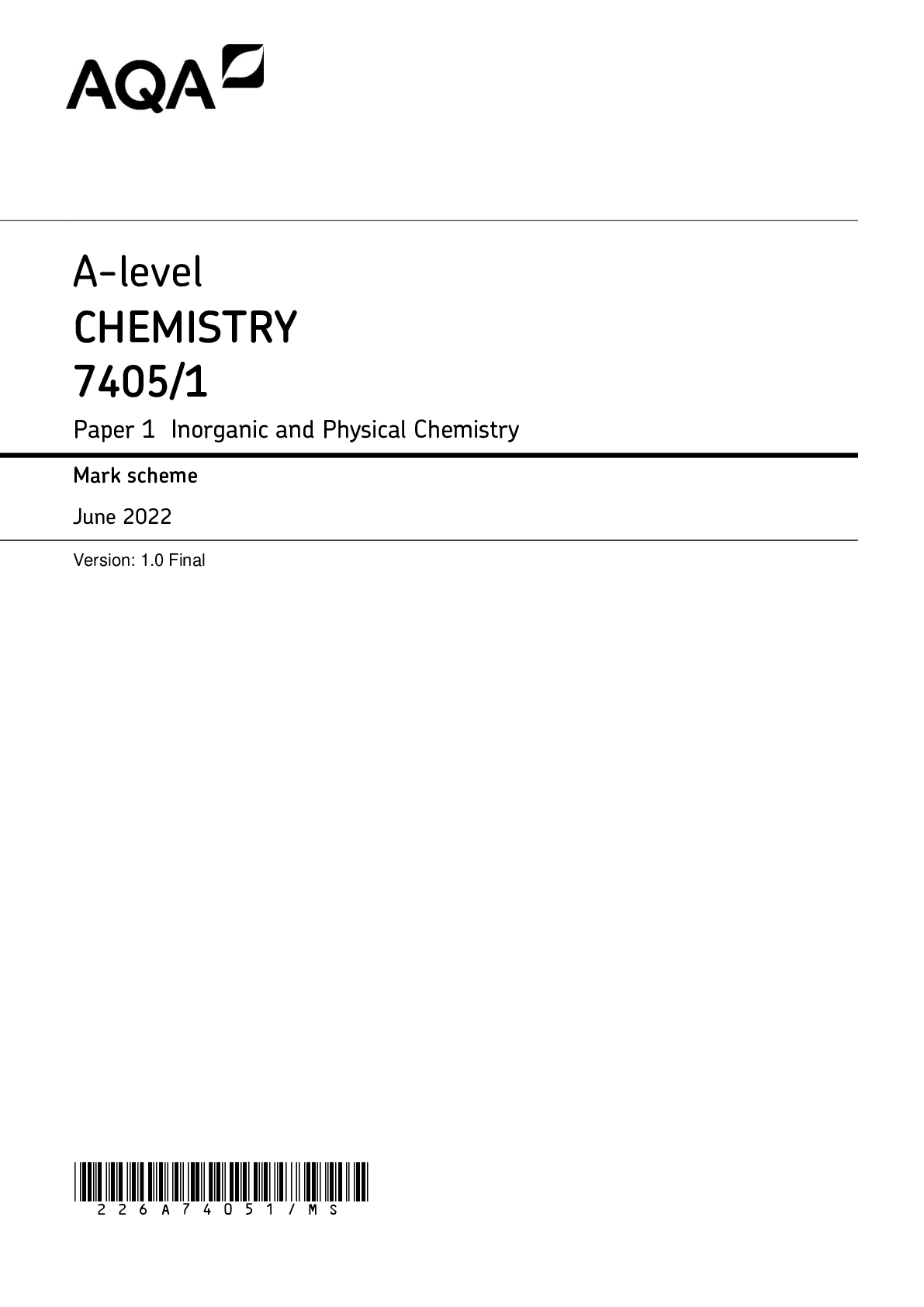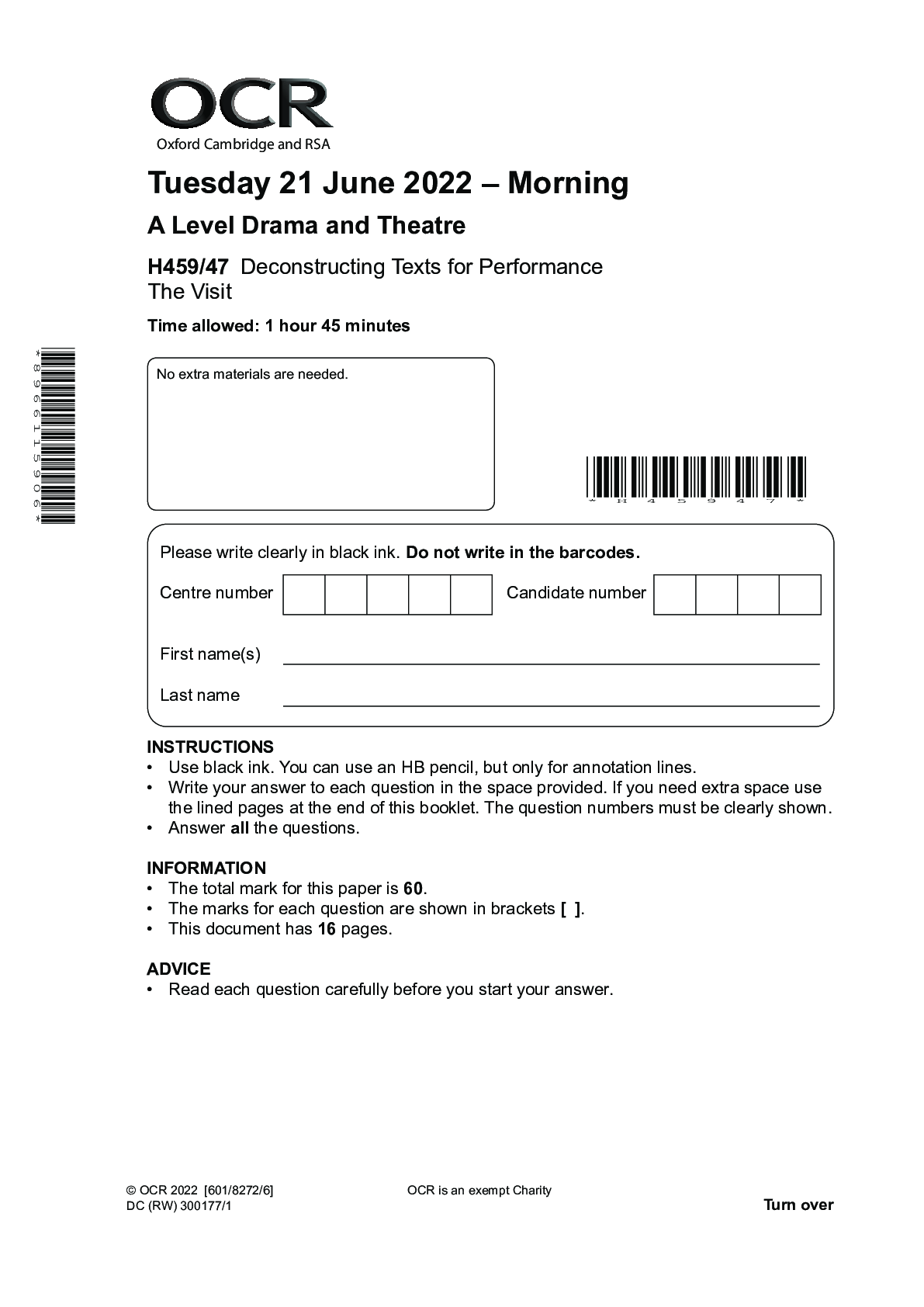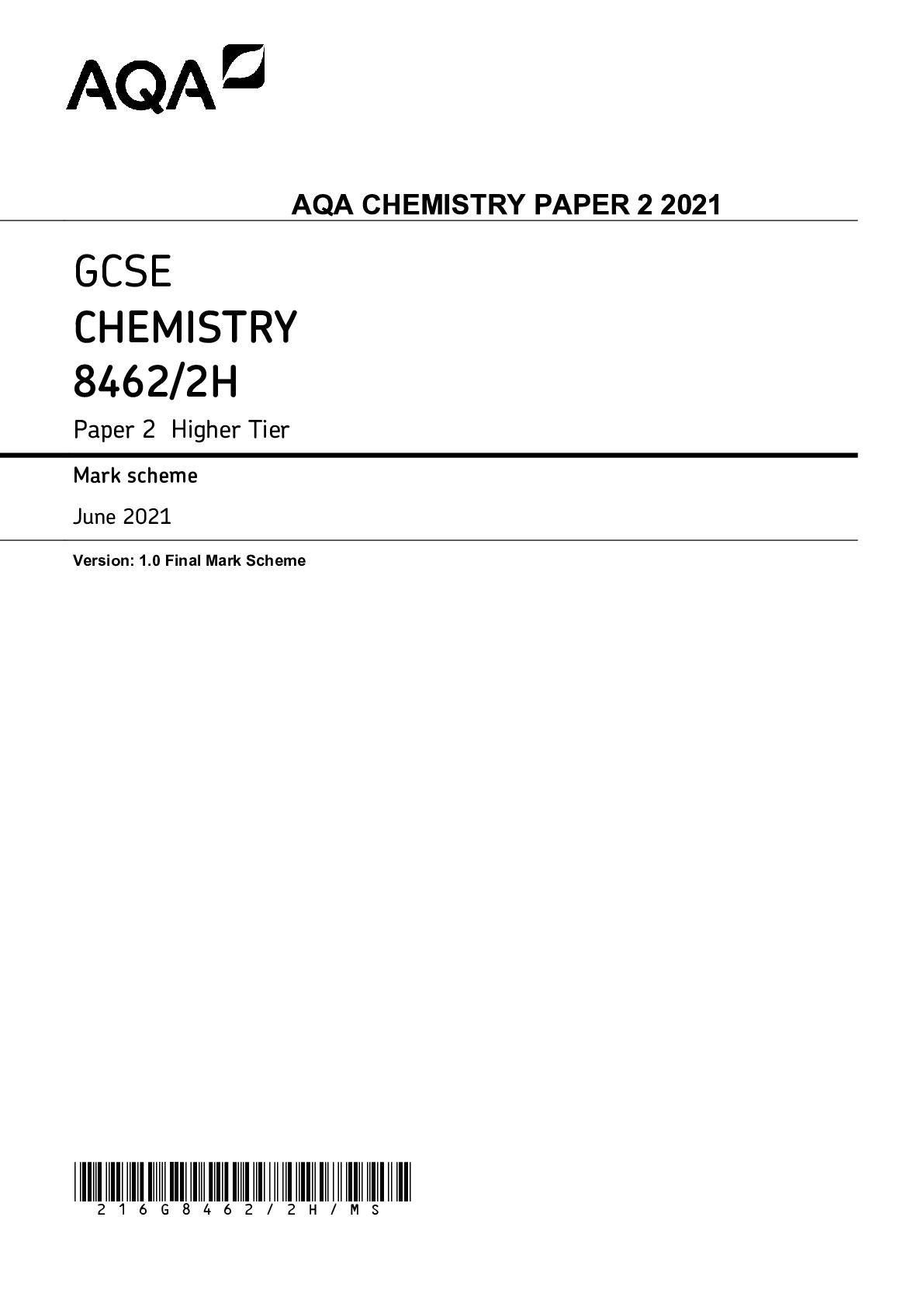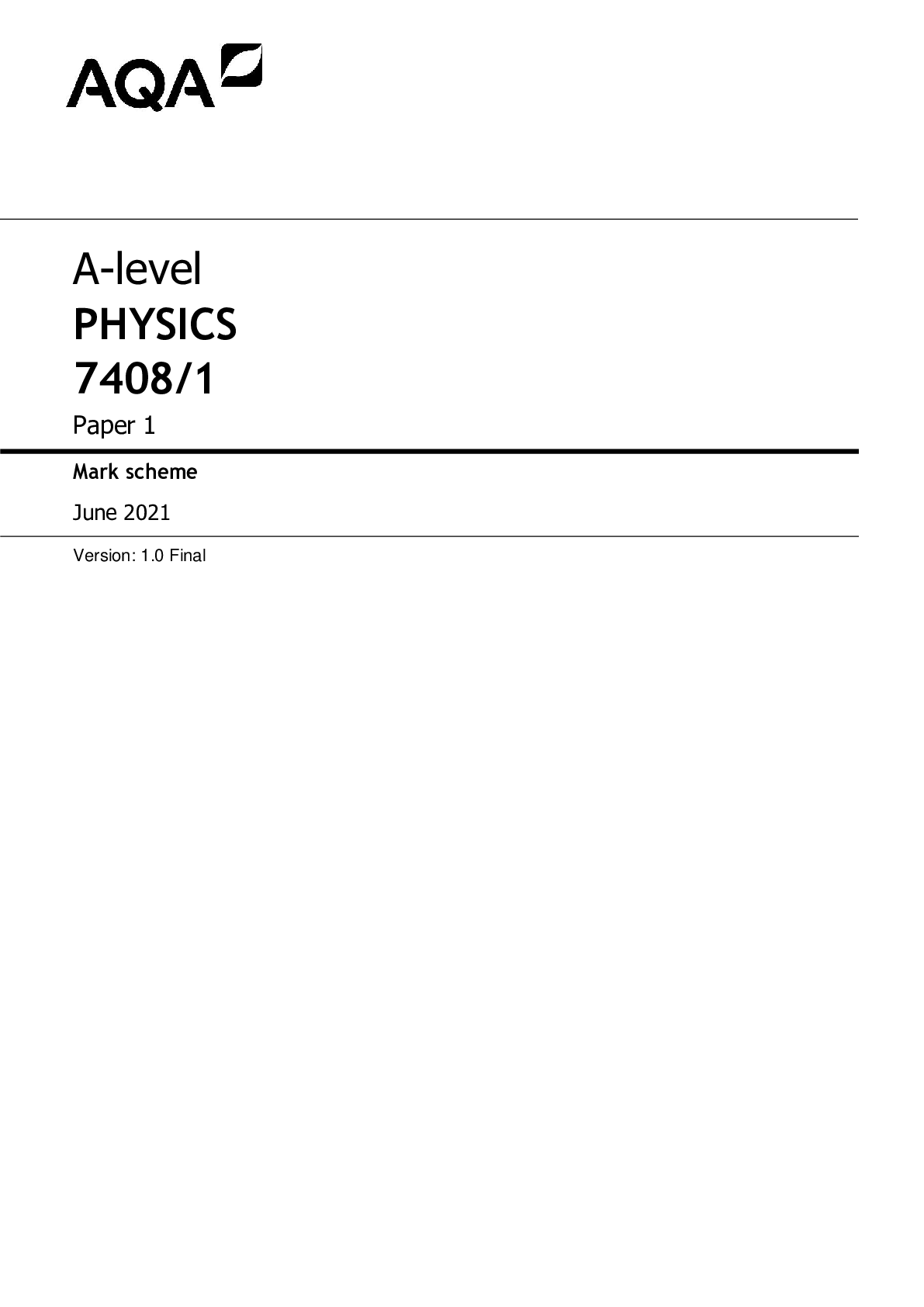AQA > A-Level Mark Scheme > AQA AS LEVEL GEOGRAPHY 7036/1 JUNE 2022 FINAL MARK SCHEME >Physical Geography and People and the En (All)
AQA AS LEVEL GEOGRAPHY 7036/1 JUNE 2022 FINAL MARK SCHEME >Physical Geography and People and the Environment
Document Content and Description Below
AS GEOGRAPHY 7036/1 Paper 1 Physical Geography and People and the Environment Mark scheme June 2022 Version: 1.0 Final *226A7036/1/... MS* Mark schemes are prepared by the Lead Assessment Writer and considered, together with the relevant questions, by a panel of subject teachers. This mark scheme includes any amendments made at the standardisation events which all associates participate in and is the scheme which was used by them in this examination. The standardisation process ensures that the mark scheme covers the students’ responses to questions and that every associate understands and applies it in the same correct way. As preparation for standardisation each associate analyses a number of students’ scripts. Alternative answers not already covered by the mark scheme are discussed and legislated for. If, after the standardisation process, associates encounter unusual answers which have not been raised they are required to refer these to the Lead Examiner. It must be stressed that a mark scheme is a working document, in many cases further developed and expanded on the basis of students’ reactions to a particular paper. Assumptions about future mark schemes on the basis of one year’s document should be avoided; whilst the guiding principles of assessment remain constant, details will change, depending on the content of a particular examination paper. Further copies of this mark scheme are available from aqa.org.uk Copyright information AQA retains the copy right on all its publications. Howev er, registered schools/colleges f or AQA are permitted to copy material f rom this booklet f or their own internal use, with the f ollowing important exception: AQA cannot giv e permission to schools/colleges to pho tocopy any material that is acknowledged to a third party ev en f or internal use within the centre. Copy right © 2022 AQA and its licensors. All rights reserv ed. Level of response marking instructions Level of response mark schemes are broken down into levels, each of which has a descriptor. The descriptor for the level shows the typical performance for the level. There are marks in each level. Before you apply the mark scheme to a student’s answer read through the answer and annotate it (as instructed) to show the qualities that are being looked for. You can then apply the mark scheme. The notes for answers provide indicative content. Students’ responses may take a different approach in relation to that which is typical or expected. It is important to stress that examiners must consider all a student’s work and the extent to which this answered the question, irrespective of whether a response follows an expected structure. If in doubt the examiner should contact their team leader for advice and guidance. Step 1 Determine a level Start at the lowest level of the mark scheme and use it as a ladder to see whether the answer meets the descriptor for that level. The descriptor for the level indicates the different qualities that might be seen in the student’s answer for that level. If it meets the lowest level then go to the next one and decide if it meets this level, and so on, until you have a match between the level descriptor and the answer. With practice and familiarity you will find that for better answers you will be able to quickly skip through the lower levels of the mark scheme. When assigning a level you should look at the overall quality of the answer and not look to pick holes in small and specific parts of the answer where the student has not performed quite as well as the rest. If the answer covers different aspects of different levels of the mark scheme you should use a best fit approach for defining the level and then use the variability of the response to help decide the mark within the level, ie if the response is predominantly level 3 with a small amount of level 4 material it would be placed in level 3 but be awarded a mark near the top of the level because of the level 4 content. Step 2 Determine a mark Once you have assigned a level you need to decide on the mark. The descriptors on how to allocate marks can help with this. The exemplar materials used during standardisation will help. There will be an answer in the standardising materials which will correspond with each level of the mark scheme. This answer will have been awarded a mark by the Lead Examiner. You can compare the student’s answer with the example to determine if it is the same standard, better or worse than the example. You can then use this to allocate a mark for the answer based on the Lead Examiner’s mark on the example. You may well need to read back through the answer as you apply the mark scheme to clarify points and assure yourself that the level and the mark are appropriate. Indicative content in the mark scheme is provided as a guide for examiners. It is not intended to be exhaustive and you must credit other valid points. Students do not have to cover all of the points mentioned in the indicative content to reach the highest level of the mark scheme. An answer which contains nothing of relevance to the question must be awarded no marks. Section A Qu Part Marking guidance Total marks 01 1 Which of the following describes the cryospheric store of water? D All water stored in its solid state in glaciers, ice caps and sea ice. 1 AO1 = 1 01 2 Which of the following outlines a positive feedback in the water cycle? D Increased water vapour in the atmosphere acts as a greenhouse gas atmosphere warms up more water is evaporated from the oceans vapour increases in the atmosphere. 1 AO1 = 1 01 3 Outline features of a flood hydrograph. Point marked Award 1 mark per valid point with extra mark(s) for developed points (d). For example: Notes for answers AO1 • A graph of discharge of a river over the period of time when the normal flow of the river is affected by a storm event (1). • Precipitation during the storm event is typically shown as a bar graph (1). • The rising limb illustrates how quickly a river responds to the rainfall event (1). • The highest point on the graph indicates the peak discharge following the rainfall event (1). • The gap between the peak rainfall and peak discharge is the lag time (1). If the rising limb is very steep and the lag time short, then the rainfall has entered the river very quickly (1d). • The receding limb indicates the rate at which the river returns to its normal discharge (1). • Allow one mark for a basic list of elements of hydrographs (1). • NB – if a response includes an accurate sketch/drawing of a flood hydrograph allow 1 mark for a sketch on its own, however accurate annotations of features identified above can receive (1) per correct feature. The notes for answers are not exhaustive. Credit any valid points. 3 AO1 = 3 [Show More]
Last updated: 11 months ago
Preview 1 out of 21 pages
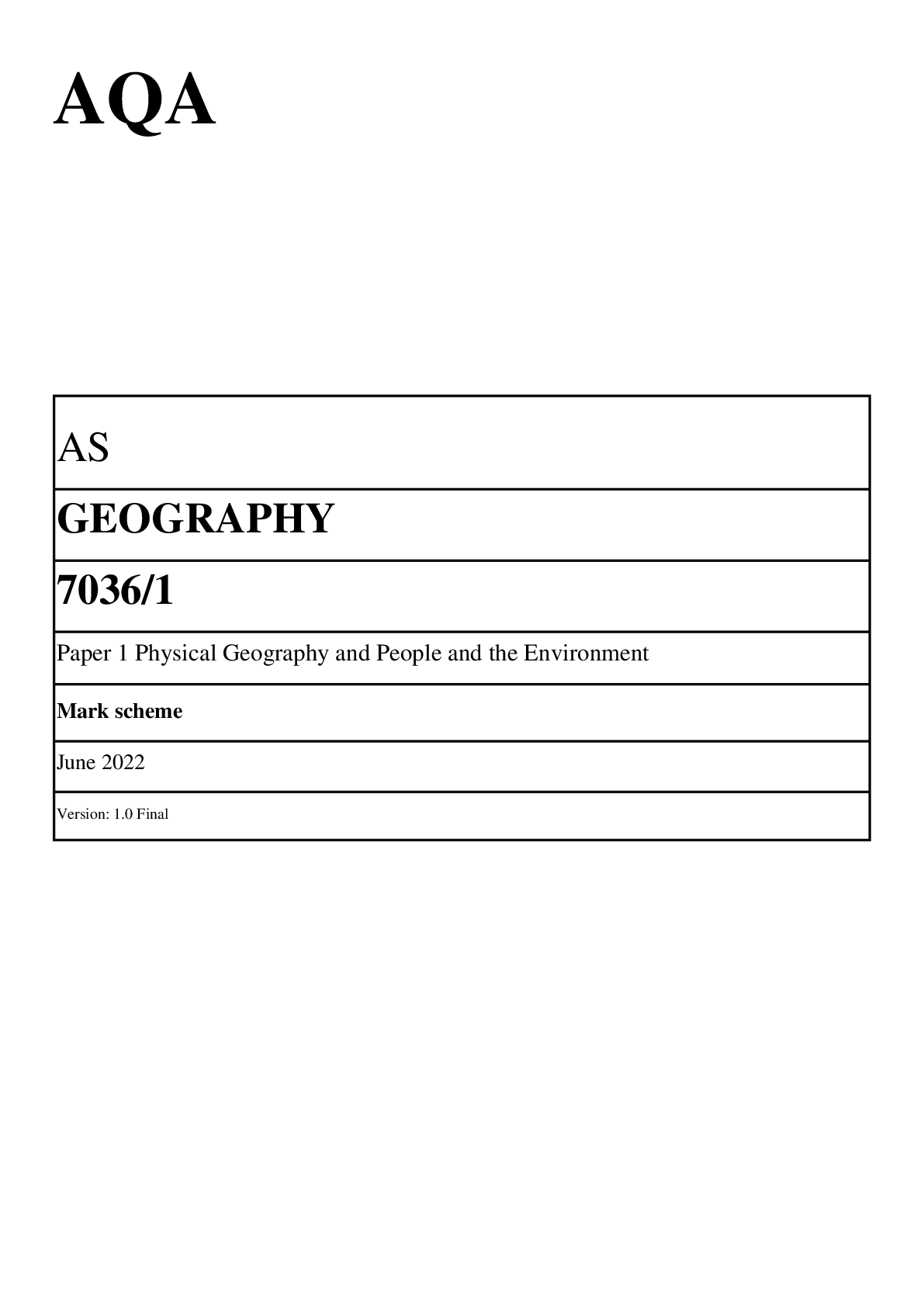
Reviews( 0 )
Document information
Connected school, study & course
About the document
Uploaded On
May 22, 2023
Number of pages
21
Written in
Additional information
This document has been written for:
Uploaded
May 22, 2023
Downloads
0
Views
142

